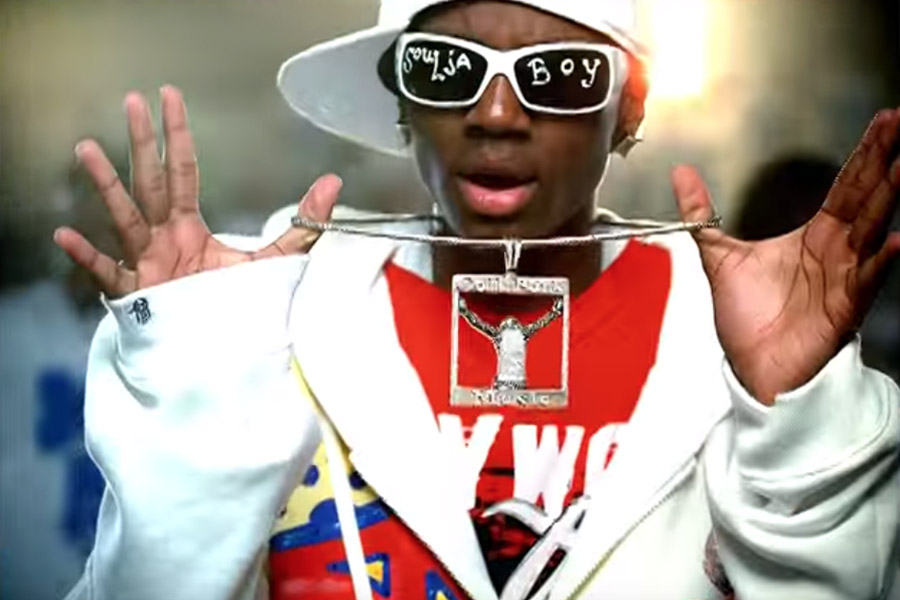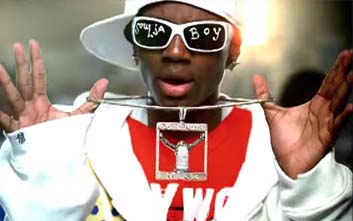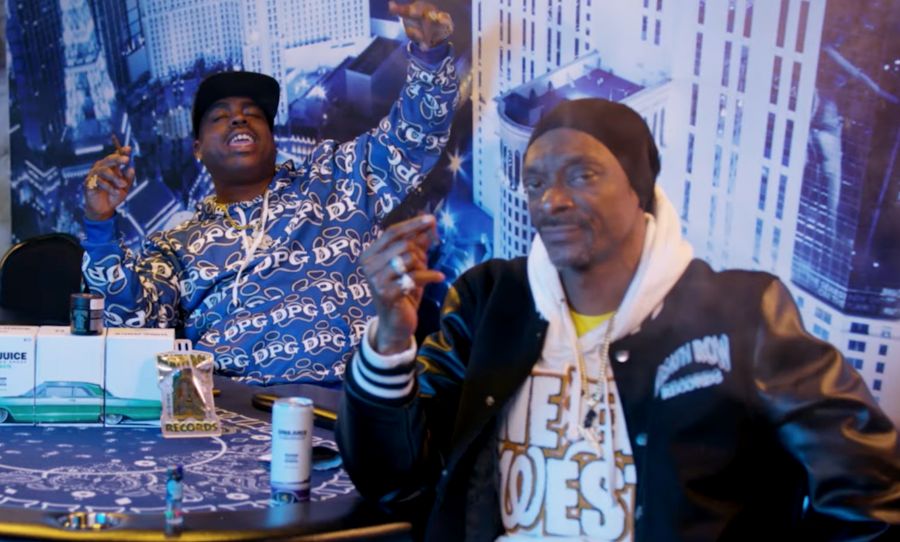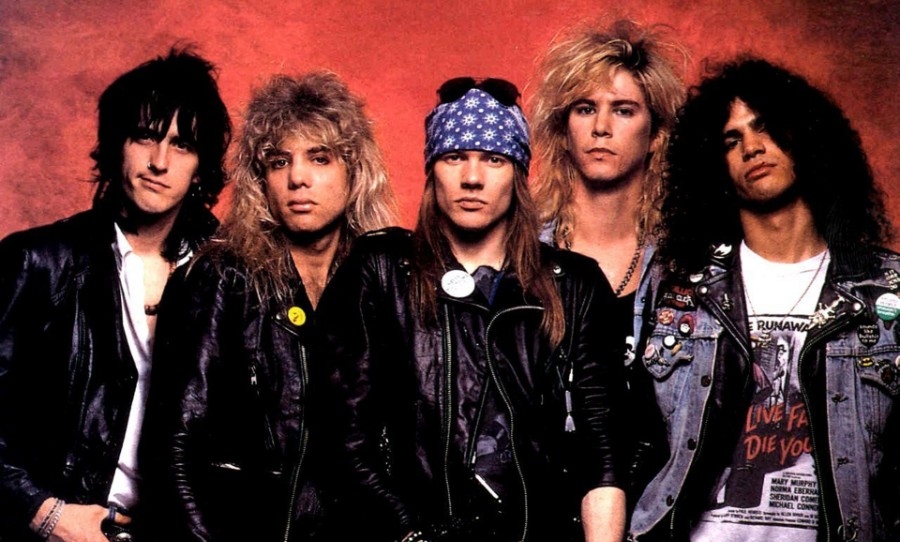Hip-hop’s rise in recent times can be charted up to one notion alone; tricking white people into thinking they could dance to it.
Hip-hop dominated 2017, riding the wave of a streaming revolution to topple rock for the first time as the most consumed genre. The figures from Nielsen show hip-hop and R&B (which they count as the same genre, look it’s an old company) accounted for almost a quarter of all music consumed in the United States, in a year where consumption rose 12.5%.
Hip-hop artists made up eight out of the 10 most popular artists of the year. The only non “hip-hop” artists were Ed Sheeran and Taylor Swift, but she had a song with Kendrick and I’m pretty sure Ed did rap one song on his first album so you know what? Counting them.
If you’re interested in charting the rise of hip-hop from the Bronx to the big time there is a bevy of documentaries available, but watching a documentary is a bit like spending a semester abroad. You won’t really learn much and people quickly get sick of hearing you talk about it.
If you’re interested in the FACTS of it all, keep reading baby.

I don’t think hip-hop’s rise to dominance is the result of it being a better genre of music (though it is). I am firmly of the belief that there is a sophisticated conspiracy afoot. Basically, what I think happened is around 2007 Jay-Z or someone of that ilk attended an illuminati meeting, and while sat at a comically large table – but one that’s also perfectly round and quite clearly came from a single, gigantic protected tree like a sequoia – outlined a desire for hip-hop to dominate the music industry.
In order for this to happen however, the genre as a whole would need to find a way to appeal to the suburban masses who didn’t mind hip-hop but just happened to mostly listen to Eminem. The think tank briefly considered softening their image to combat misperceptions of the genre as violent and aggressive, but this idea was dismissed almost as quickly as it was formulated (remember this was before Drake was invited to attend meetings).
After hours of negotiation, finally the committee stumbled on the perfect solution; all they needed to do to give hip-hop mainstream appeal was trick white people into thinking they could dance to it.
I don’t exclude myself from this by the way. I like to dance, though I mainly do so in private. I’m a white man, so I treat privacy as something of a game. It’s like HORSE but instead of getting a letter for every shot you miss, you get a letter for every 1.3 standard drinks you ingest. If I have E amount of beers, I’m in private everywhere.
White people have traditionally been made the subject of fun for our lack of rhythm and inability to dance, so what better way to get us to fall in love with a genre than by tricking us into thinking we’d finally overcome this incredibly justified stereotype?
Early rumblings of this movement can be traced back to just before 2008, when Crank That (Soulja Boy) first infiltrated the ringtone folders of our Motorola Razrs. As a first attempt it showed promise, peaking on the charts at number one, two, and three in the US, UK, and Australia respectively.
Instructions for the dance in the (charmingly mid-to-late-2000s) video was described succinctly in the lyrics as “lean to the left and crank that thing”. Explanations in the Wall Street Journal were slightly more detailed:
“Dancers bounce back on their heels, ripple their hands, crank their wrists like motorcyclists, then lunge into a Superman pose”.
The mere fact that this song and dance achieved enough relevancy to be covered in an international newspaper that’s as white as the paper it’s printed on showed positive signs for the movement, and though the dance itself was still far too complex for any of us to actually do, it sure encouraged us to try.
Progress remained slow but steady over the next few years as artists continued to give us all too much credit with approachable but still unmanageable dances such as The Dougie, but it wasn’t until early 2013 that the movement achieved speed with the second coming of the Harlem Shake.
This is where things get a little complicated, but it also provides the first example of the movement beginning to gain sentience. The song featured in Harlem Shake videos features a vocal sample: “then do the Harlem Shake”. This is in reference to a dance originating in the neighbourhood in the 1980s.
Below are two videos. The first is about and features the original Harlem Shake dance. The second kicked off the 2013 meme. Note the differences.
As you can see, one of these dances requires intense amounts of rhythm and feeling, and the other one doesn’t really require anything. The meme-ified dance is far more approachable, and vastly appealed to white people by combining several of our favourite activities; dressing up, congregating in a group, and gentrification. The group aspect of the Harlem Shake meme is particularly attractive as it provides an opportunity to hide.
This trend continued with the appropriation of twerking later that year, despite the dance having originated in the New Orleans bounce scene some 30 years earlier. Twerk momentum had been steadily building throughout the mid-2000s, gaining further traction throughout 2011 and 2012, but it wasn’t until Miley Cyrus put it on the guy in the Beetlejuice suit that it was really game on for white people twerking.
Not only did we embrace the dance, we took it to the Peak White degree of turning it into a form of exercise, the appropriation and subsequent commodification of a cultural practice long being a key signifier of mainstream white acceptance (see also: yoga, sushi). ‘Twerkercise’ was the firing of the starter’s pistol, a claxon call to Grammy voters to give Macklemore and Ryan Lewis four awards.
Twerkercise also gave notice to the industry that things had been getting a little out of hand. The runaway nature of 2013 meant it was necessary to re-align the dances white people were becoming increasingly confident performing with the genre they originated from.
This came in the form of Bobby Shmurda’s Shmoney Dance. I’m unclear on whether the Shmoney Dance is responsible for the success of Shmurda’s 2014 hit Hot N*gga, or the song’s infectious and unceasing replayability led to the meme-ification of the dance, but either way it’s probably best we take the opportunity to revisit it now.
Use the next three minutes and 19 seconds to visualise how exciting New York hip-hop would be right at this moment if Bobby Shmurda was never in jail. If you insist on it, you can skip to 2:20 for the dance, but don’t insist on it. Patience is a virtue.
The Shmoney Dance works for a couple reasons.
Firstly, it’s a sick dance, but most importantly, it’s laid back enough that it works on whatever beat you do it to. This is particularly important when discussing white danceability because we mostly dance by committee, approaching dance with the same revisionist attitude we do history. In our opinion, the reality of the beat is less important than what we choose to believe it is, but if you put enough of us together, we can’t ever agree on it.
The one silver lining of this particular dance style, as discussed earlier, is that the safety of the group affords us an opportunity to hide.
The Shmoney Dance represents the zenith of the dance indoctrination movement, but as is always the case with any zeitgeist entrant, it would eventually jump the shark.
The Dab, created by Atlanta rapper Skippa Da Flippa and popularised by Migos, took over 2016 and 2017. Children everywhere were doing dabs. Sportsmen celebrated touchdowns and centuries with prolonged dabs. Politicians around the world such as Hillary Clinton, Emmanuel Macron and Bill Shorten indulged in dabs.
The true genius of the dance is in its simplicity. All the Dab requires is a dip of the head into the crook of the elbow. The move’s similarity to proper public sneeze etiquette and white people’s proclivity for allergies meant that a lot of people were doing the Dab without even realising it.
It wasn’t just a dance move. The Dab was a celebration, an insult, a confirmation, a generation-spanning manoeuvre that came to embody everything to the point where it meant nothing. The Dab was an ‘End Of History’ moment for the movement. Its pandemic virality reached a level of mainstream embrace where there was no more that could be done, and hip-hop’s domination of 2017 showed there was no more that needed to be.
But in the word’s of Dr. Dre, “anybody can get it, the hard part is keeping it”. While the movement to have hip-hop dominate the mainstream through the invention of dances easy enough for said mainstream to participate in has well and truly run its course, there are still other markets to conquer.
Now that hip-hop is the culture, they are working to capture the counter-culture. I believe this is being done by focusing on nostalgia-based fusions with post-punk and emo music that has given us the rise of Soundcloud rap. Talk to me in a decade if you want to hear my dumb theory about that.



